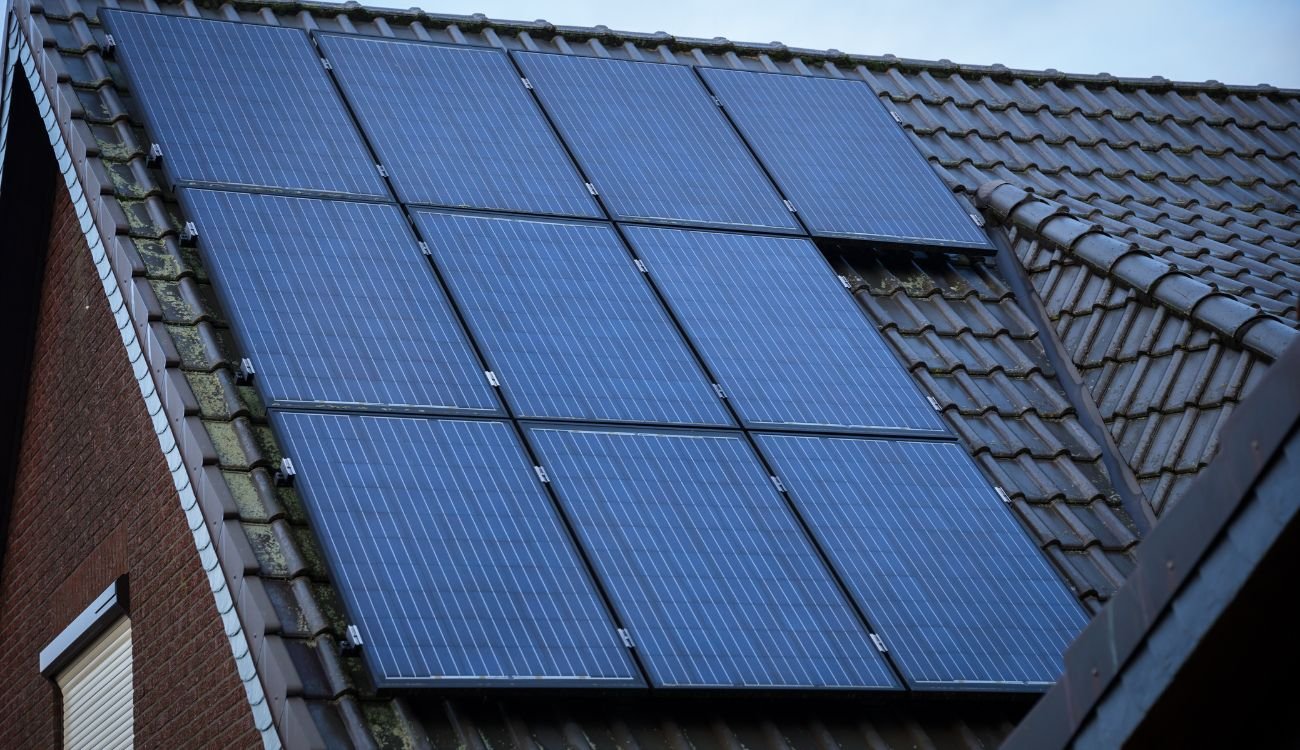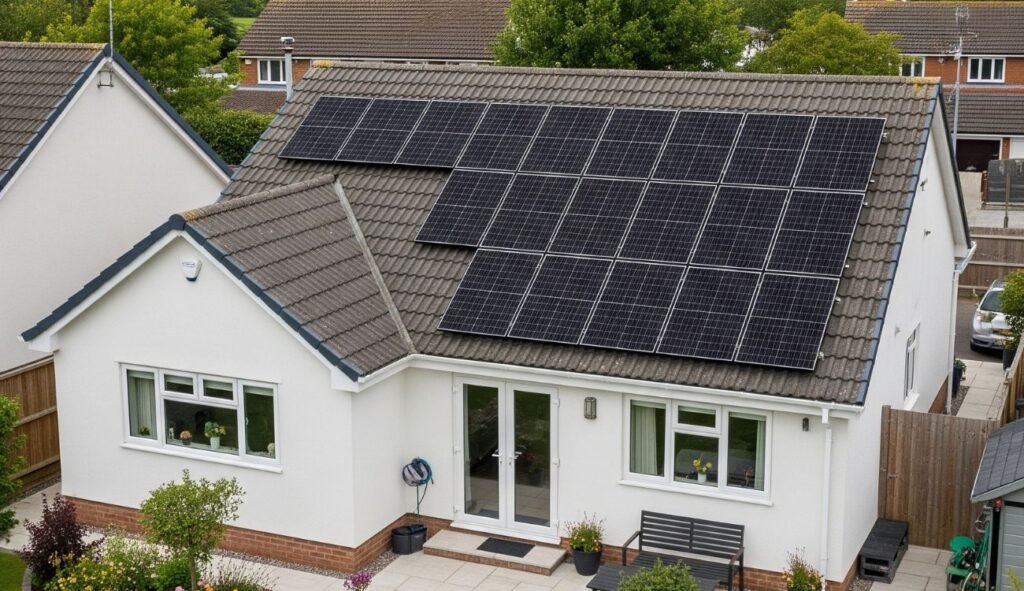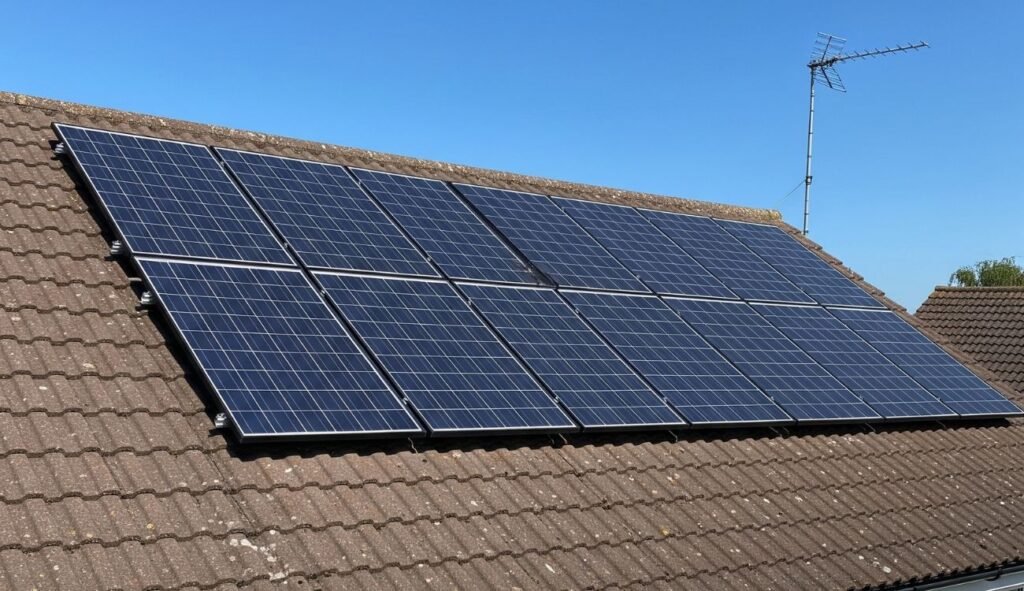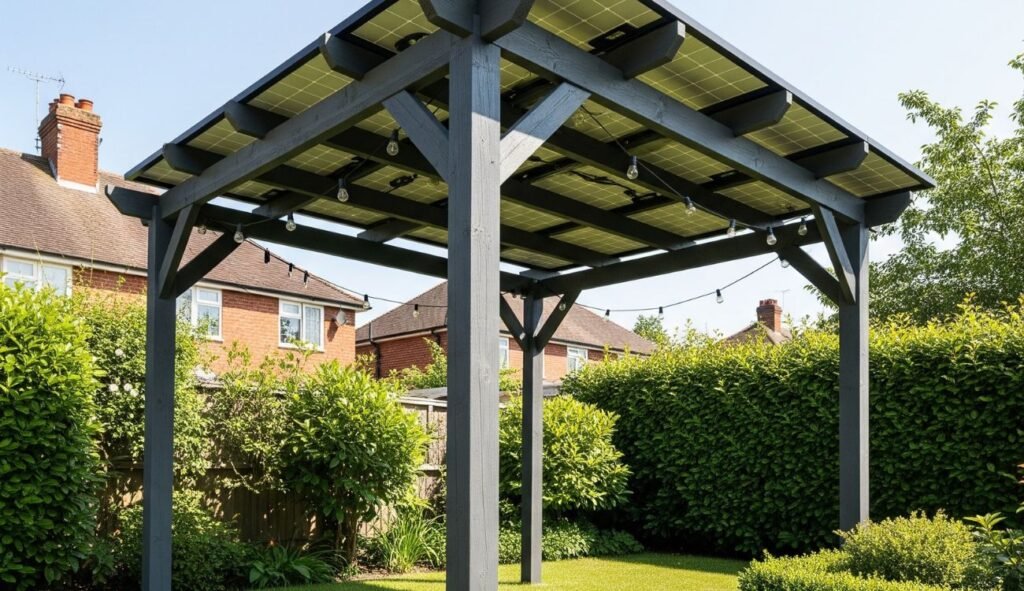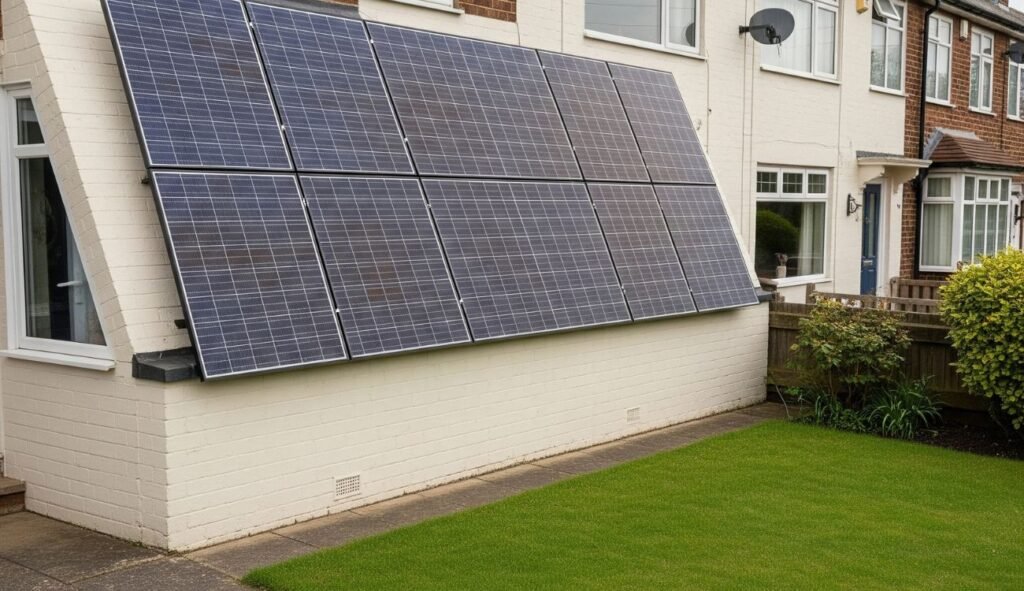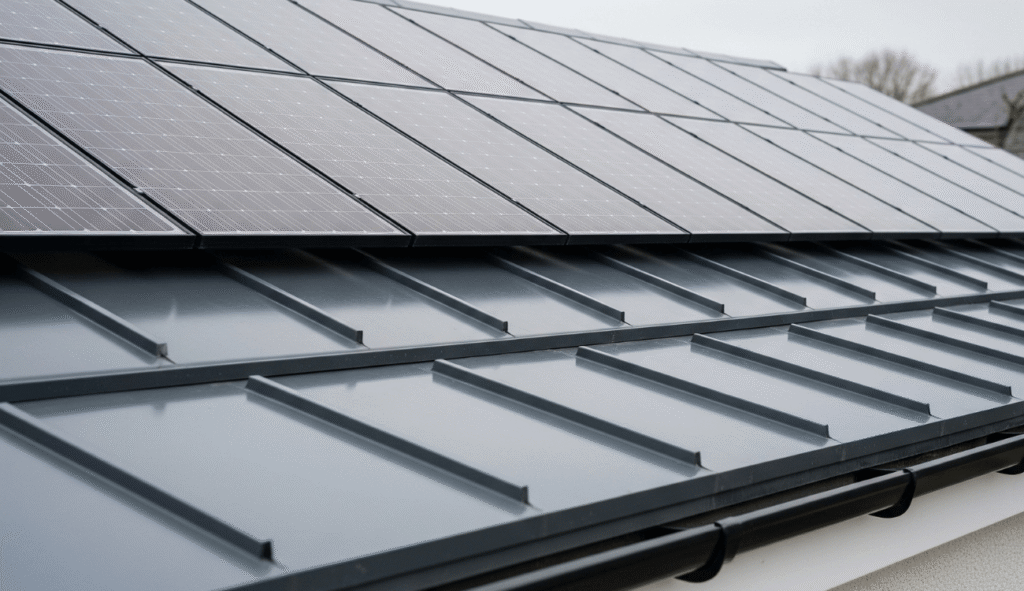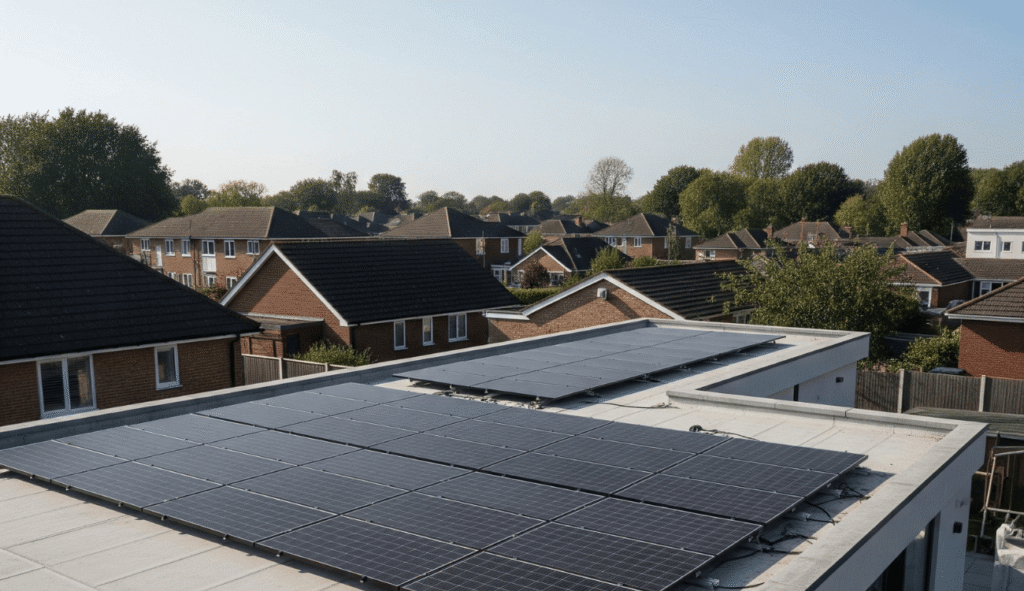When considering solar energy for your property, one critical question often arises: horizontal vs vertical solar panel installation — which is better? This decision significantly impacts energy efficiency, long-term savings, and even planning permissions.
Whether you’re a UK homeowner, a landlord aiming to improve EPC ratings, or a commercial property owner targeting sustainability goals, understanding the orientation of your solar panel installation is crucial.
In this expert guide, we’ll compare horizontal and vertical solar panel installations, backed by real-world data, compliance insights, and tailored advice for residential, rental, and commercial applications.
What Is the Difference Between Horizontal and Vertical Solar Panel Installation?
The main difference between horizontal and vertical solar panel installations lies in the orientation of the panels on the roof. Horizontal panels (landscape) are wider than they are tall, whereas vertical panels (portrait) are taller than they are wide.
This simple design distinction has important implications for both energy output and practical considerations such as space efficiency and installation costs.
Understanding Panel Orientation Basics
Horizontal (landscape) and vertical (portrait) refer to how solar panels are mounted relative to the longer and shorter sides of the panel.
- Horizontal panels are wider than they are tall and often cover a larger roof area across fewer rows.
- Vertical panels are taller than they are wide, allowing more flexibility in narrow or cluttered roof spaces.
How Orientation Affects Solar Output
Solar panels generate electricity based on sunlight exposure and panel angle. While the azimuth (direction facing) and tilt angle remain essential, the mounting orientation influences how panels shed debris, heat distribution, and shadowing effects.
Which Orientation Is More Efficient in the UK?
In terms of efficiency, the UK’s climate and roof characteristics play a significant role in determining whether horizontal or vertical solar panels are better.
Horizontal panels tend to perform better on south-facing roofs, which are the most optimal for solar energy generation, while vertical panels are more effective on east-west facing roofs where sunlight exposure is more spread out throughout the day.
Overall, horizontal panels are generally the most efficient orientation for the UK climate, given their ability to maximise solar exposure during peak sun hours.
However, for properties with roofs that face east or west, vertical panels offer a practical solution that optimises morning and afternoon sun exposure, despite not capturing as much of the midday sun.
For homes in Newcastle and the North East, both vertical and horizontal orientations can be used, but vertical panels may provide more solar exposure. You can get a personalised solar panel installation quote from Future Heat for homes in the Newcastle area, helping to save you money on energy bills.
Does the UK Climate Favour One Setup Over Another?
In the UK, where skies are often overcast, efficiency depends more on panel positioning and shade mitigation than on intense direct sunlight. However, installation orientation can still play a significant role:
Horizontal Panels in the UK
- Best for south-facing roofs
- Optimise solar gain during midday (when the sun is highest)
- More susceptible to pooling rain or debris without adequate tilt
Vertical Panels in the UK
- Better for east-west facing roofs
- Help capture early morning and late afternoon light
- Easier to clean naturally due to better rain runoff
Real-World Efficiency Example
According to a study by Energy Saving Trust, panel orientation can affect up to 5–10% of annual solar output. On rooftops with high tilt angles (e.g., >35°), portrait orientation may reduce shadowing between rows and improve airflow, cooling the panels more effectively.
Which Orientation Works Best for Different UK Property Types?
The ideal orientation of solar panels will vary depending on the type of property. Homeowners, landlords, and commercial property owners all have different needs and space constraints when it comes to solar panel installation.
Best for UK Homeowners: Horizontal Panels for Maximum Output
For most homeowners with standard south-facing pitched roofs, a horizontal (landscape) orientation typically allows for:
- Fewer mounting rails
- Simpler wiring
- More panels in fewer rows = greater wattage per square metre
Tip: Pair this with a Smart Export Guarantee tariff for best returns.
Best for Landlords: Vertical Panels for EPC Flexibility
Landlords upgrading older or smaller properties (especially in urban areas) may find vertical (portrait) solar panels ideal due to:
- Better fit on narrow terraces or flat roofs
- Improved airflow and easier maintenance
- Helps boost EPC rating (required for lettings) with less structural interference
EPC improvements via solar can raise ratings by up to two bands, unlocking higher rental yields.
Best for Commercial Buildings: Mixed Orientation for Scalability
Larger rooftops on warehouses, schools, and retail outlets benefit from flexible installation patterns:
- Portrait panels allow for more rows on flat roofs
- Landscape panels maximise per-row output
- Ballasted or adjustable racking can tilt panels regardless of orientation
Businesses may claim 100% capital allowances through the Annual Investment Allowance (AIA) on solar installation costs.
How Does Orientation Affect Installation Cost and Complexity?
The orientation of your solar panels has a direct impact on the installation cost and complexity. Horizontal installations are typically less expensive due to their straightforward design, while vertical installations can require additional mounting structures or more intricate positioning.
Horizontal Solar Panel Installation Costs
- Less rail material needed due to fewer rows
- Simpler to install on typical gable roofs
- Lower scaffolding and labour costs for small homes
Avg. cost for 4kW system (horizontal): £5,000–£6,500
Vertical Solar Panel Installation Costs
- May require more racking and fixings
- More flexible for odd-shaped or small roofs
- Can increase install time slightly
Avg. cost for 4kW system (vertical): £5,500–£7,000
Does Panel Orientation Impact Planning Permission or Aesthetics?
In the UK, planning permission is generally not required for solar panel installations on domestic properties, provided certain conditions are met. However, the orientation of your panels can still affect aesthetic appeal and compliance with local planning rules. Horizontal panels tend to blend more naturally with traditional rooflines, while vertical panels may appear more visually striking.
Planning Permission Considerations in the UK
According to gov.uk planning portal, most domestic solar PV installations are permitted development. However:
- Landscape panels often blend better with traditional rooftops
- Portrait panels may appear more visible on the front-facing elevation
Conservation areas or listed buildings may impose stricter rules.
Aesthetic & Neighbour Considerations
- Horizontal orientation may appear more uniform
- Vertical orientation can be less intrusive on narrow or mansard roofs
- Discuss with neighbours if panels face shared spaces
Frequently Asked Questions (FAQs)
Yes, it is possible to install both horizontal and vertical solar panels on the same property, particularly if you have a large roof or flat roof. Combining the two orientations allows you to optimise solar energy collection based on the unique sun exposure at different times of day.
The lifespan of solar panels primarily depends on the quality of the panels and their maintenance, rather than their orientation. Both horizontal and vertical panels typically last between 25 and 30 years. However, vertical panels might have a slight edge in longevity in areas with heavy rain or snow, as they are less prone to dirt accumulation and debris buildup, which can shorten the life of horizontal panels.
Vertical solar panels can be a viable option for slanted roofs, particularly if the roof’s pitch is too steep for traditional horizontal panels. On steeply sloped roofs, vertical panels may provide a better fit, as they tend to be more adaptable to varying angles and require less adjustment during installation.
YIn the UK, winter conditions, including shorter days and lower sun angles, can impact solar panel performance. Horizontal panels tend to perform better during the summer months when the sun is higher in the sky, but in the winter, vertical panels may capture more sunlight, particularly during early mornings and late afternoons. This is because vertical panels can absorb sunlight from lower angles, which is beneficial in the colder months when the sun is lower in the sky.
Vertical solar panels aren’t typically better than traditional roof-mounted panels in terms of energy output. In the UK, south-facing roof panels installed at an angle of around 30–40 degrees generally offer the best performance. However, vertical solar panels can be beneficial in specific scenarios—such as limited roof space, high snowfall areas (where panels stay clearer), or for installations on building façades and balconies. They may also produce more power during winter months when the sun is lower in the sky. While not ideal for maximum year-round efficiency, vertical panels can still be a practical solution depending on your property’s orientation and aesthetic requirements.
Our Verdict
When deciding on the ideal solar panel installation for your property, it’s important to consider various factors such as roof type, solar exposure, space constraints, and long-term energy goals. Whether you choose horizontal or vertical panels, each orientation has distinct advantages depending on the specifics of your property.
For residential homes, especially those with south-facing roofs, horizontal panels generally offer the best performance. Landlords, looking to meet EPC requirements or maximise space efficiency, might prefer vertical panels, which work well for narrower roofs.
For commercial properties, a mix of both orientations can provide the flexibility to optimise energy production across large, flat roofs.
Ultimately, there’s no one-size-fits-all solution. The best choice will depend on your unique property characteristics and energy requirements. By working with an experienced MCS-certified installer, you can ensure a tailored solar panel system that maximises your investment and energy savings.
Myles Robinson is a seasoned expert in the boiler and home improvement industry, with over a decade of experience. He is deeply committed to environmental sustainability, actively promoting energy-efficient heating solutions to help households reduce their carbon footprint. By combining industry expertise with a dedication to environmental responsibility, Myles continues to lead efforts in transforming home heating practices towards a more sustainable future.

